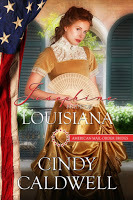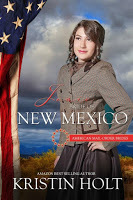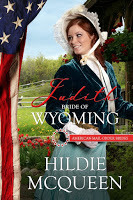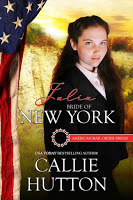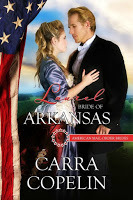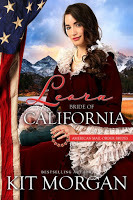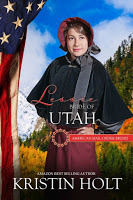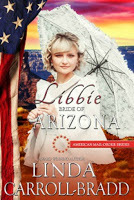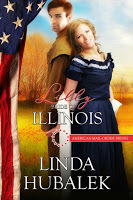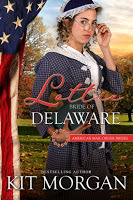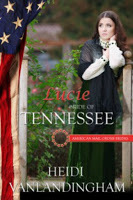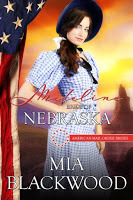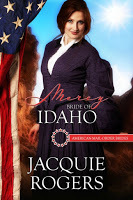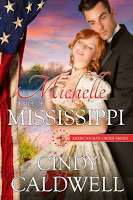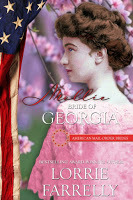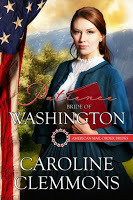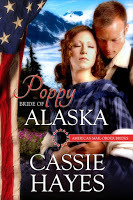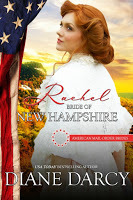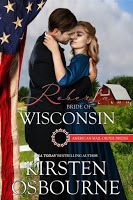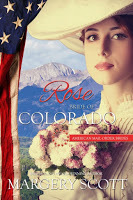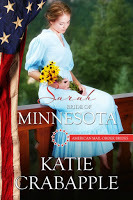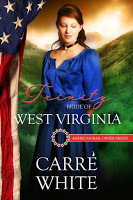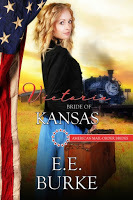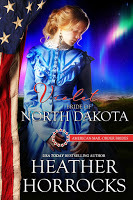Kristy McCaffrey's Blog: Author Kristy McCaffrey, page 14
January 11, 2016
The Great Work of Your Life
By Kristy McCaffrey
First, Happy New Year to one and all! This is a time of fresh starts and new ideas, so perhaps this post will spark a bit of recognition in your heart, especially for those who may be seeking that BIG question: What is my purpose?
When I was a little girl, I couldn’t NOT write. I filled dozens of journals, I categorized every aspect of the King Arthur legends onto notecards and filed them, I kept a log of every movie I’d ever seen. Narratives have flowed through me like the blood in my veins since as long as I can remember. So what did I do? I studied engineering in college. Did I feel it was my place in life? No.

In Stephen Cope’s The Great Work of Your Life: A Guide for the Journey to Your True Calling (Bantam Books, 2012), the author delves into the idea of dharma—a concept from Hinduism that encompasses one’s character or fundamental nature, the essential quality of who we are and what we’re meant to do here on Earth. This idea isn’t exclusive to Hinduism, however.
“If you bring forth what is within you, what you bring forth will save you; if you do not bring forth what is within you, what you do not bring forth will destroy you.” ~ Gnostic Gospel of Thomas
What does this mean? When you are fully immersed in a task that excites and invigorates you, you’ll come alive with energy. The endless and necessary hours of work and toil will be wholly satisfying. But if you deny the desire to move forward into an inspired task, you will lose more than just your purpose in life—you will cease to fulfill a potential that this world needs from you.
Dharma is sacred duty. How do you find this duty, this revered vocation? Within the divine texts of the Bhagavad Gita are four central truths.
Look to your dharma—name it and embrace it.
Do it full out—commit to it completely.
Let go of the fruits—success and failure aren’t your concern.
Turn it over to God—true vocation unites the individual soul to the divine soul.
In our lives, we’re each given a gift—you might call it THE gift, a desire within us to pursue that which calls from deep inside our soul. Cope states, “The Gift is God in disguise.”
In his book, Cope shares details from the lives of people who have lived their dharma. When Jane Goodall was four years old, she disappeared at her family home to hide in the hen house to learn how they lay eggs. This took hours of waiting. Naturally, her parents were frantic with worry. When she finally emerged, her mother—instead of scolding and punishing her—acknowledged what her daughter had been seeking. This validation is important in embracing one’s dharma, especially at a young age when we’re all impressionable to the opinions of those around us.
This is illuminated in the story of a man who became a priest, but what he really desired was to study and create music. He joined his vocation at the urging of his mother, who had always wanted a priest in the family. That he was close to the spiritual music of the church seemed to fulfill him, but not quite. Over time, he became depressed and unhappy, and ceased to be the best priest he could be. Even more, he was despondent from being near to that which called to his soul but not fully joined to it.
We serve no one—least of all ourselves—by not acknowledging and fulfilling our dharma.
When I began writing in earnest, I was filled with doubts. I embarked on a long journey to learn the craft of writing, which hasn’t always been easy. I made mistakes and stumbled, and for a long time I spent more money than I made. But I have never ceased to feel that I was on the right path. I’ve come to believe it’s not the writing itself that is my dharma, but rather the way it propels me forward into areas of curiosity. I’m simply a conduit to filter and share what I learn with others.
What is your dharma?

First, Happy New Year to one and all! This is a time of fresh starts and new ideas, so perhaps this post will spark a bit of recognition in your heart, especially for those who may be seeking that BIG question: What is my purpose?
When I was a little girl, I couldn’t NOT write. I filled dozens of journals, I categorized every aspect of the King Arthur legends onto notecards and filed them, I kept a log of every movie I’d ever seen. Narratives have flowed through me like the blood in my veins since as long as I can remember. So what did I do? I studied engineering in college. Did I feel it was my place in life? No.

In Stephen Cope’s The Great Work of Your Life: A Guide for the Journey to Your True Calling (Bantam Books, 2012), the author delves into the idea of dharma—a concept from Hinduism that encompasses one’s character or fundamental nature, the essential quality of who we are and what we’re meant to do here on Earth. This idea isn’t exclusive to Hinduism, however.
“If you bring forth what is within you, what you bring forth will save you; if you do not bring forth what is within you, what you do not bring forth will destroy you.” ~ Gnostic Gospel of Thomas
What does this mean? When you are fully immersed in a task that excites and invigorates you, you’ll come alive with energy. The endless and necessary hours of work and toil will be wholly satisfying. But if you deny the desire to move forward into an inspired task, you will lose more than just your purpose in life—you will cease to fulfill a potential that this world needs from you.
Dharma is sacred duty. How do you find this duty, this revered vocation? Within the divine texts of the Bhagavad Gita are four central truths.
Look to your dharma—name it and embrace it.
Do it full out—commit to it completely.
Let go of the fruits—success and failure aren’t your concern.
Turn it over to God—true vocation unites the individual soul to the divine soul.
In our lives, we’re each given a gift—you might call it THE gift, a desire within us to pursue that which calls from deep inside our soul. Cope states, “The Gift is God in disguise.”
In his book, Cope shares details from the lives of people who have lived their dharma. When Jane Goodall was four years old, she disappeared at her family home to hide in the hen house to learn how they lay eggs. This took hours of waiting. Naturally, her parents were frantic with worry. When she finally emerged, her mother—instead of scolding and punishing her—acknowledged what her daughter had been seeking. This validation is important in embracing one’s dharma, especially at a young age when we’re all impressionable to the opinions of those around us.
This is illuminated in the story of a man who became a priest, but what he really desired was to study and create music. He joined his vocation at the urging of his mother, who had always wanted a priest in the family. That he was close to the spiritual music of the church seemed to fulfill him, but not quite. Over time, he became depressed and unhappy, and ceased to be the best priest he could be. Even more, he was despondent from being near to that which called to his soul but not fully joined to it.
We serve no one—least of all ourselves—by not acknowledging and fulfilling our dharma.
When I began writing in earnest, I was filled with doubts. I embarked on a long journey to learn the craft of writing, which hasn’t always been easy. I made mistakes and stumbled, and for a long time I spent more money than I made. But I have never ceased to feel that I was on the right path. I’ve come to believe it’s not the writing itself that is my dharma, but rather the way it propels me forward into areas of curiosity. I’m simply a conduit to filter and share what I learn with others.
What is your dharma?

Published on January 11, 2016 19:12
•
Tags:
dharma, kristy-mccaffrey, sacred-duty, stephen-cope, the-great-work-of-your-life, vocation
December 3, 2015
New Release ~ Alice: Bride of Rhode Island
Alice: Bride of Rhode Island is now available exclusively at Amazon and in the Kindle Unlimited program.

Read it today!!
50 brides, 50 states, 50 books...released in 50 consecutive days.
Don't miss this groundbreaking collaboration between 45 authors.
Learn more about each book, as well as the free prequel, here.
Join us at the American Mail-Order Brides Facebook page for release updates and exclusive giveaways.
Sign-up for Kristy's newsletter to stay updated.
* * * *
American Mail-Order Brides Series
Alice: Bride of Rhode Island
Book 13
Fleeing her stepfather and an arranged marriage in Newport, Alice Endicott finds work as a seamstress at the Brown Textile Mill near Boston. When a devastating fire destroys the factory, she and all the girls face dire unemployment circumstances. But hope arrives when their manager, Roberta McDaniel, shares the Grooms’ Gazette with them. Each woman will choose a husband and become a mail-order bride. As Alice’s friends—Lottie, Leora, Judith, Beth, Lessie and Josie—embrace the idea, she too becomes caught up in the excitement of a grand new adventure.
When fisherman Frank Martel contacts her, Alice can’t pass up the opportunity to return to Rhode Island despite her stepfather’s presence. Upon arriving at the train station in Tiverton, however, Frank neglects to meet her.
James Martel is shocked to find a woman at the rail depot claiming to be his brother’s fiancée. Even more surprising is her connection to a man who ruined James’ father years before. When Frank confesses that he can no longer wed Alice, James steps forward to fill the role since the beautiful young woman holds the key to avenging the Martel name.
Can Alice convince her new husband that their marriage is worth saving once she discovers his subterfuge? And will James learn that love is more important than revenge?
A sweet romance set in 1890 America.
* * * *
Excerpt
As soon as Alice had arrived at the office of Martel Fishing Enterprises, the older Mr. Martel had sequestered himself away with Frank, her betrothed. Frank—with the same dark hair as James but shorter in stature—hadn’t appeared too happy to see her, barely shaking her hand. She had a sinking feeling she’d soon be headed back to the train station.
She ruminated over what she should now do. She didn’t have enough money for a return ticket. Besides, she had nothing to return to. All her good friends from the factory were in the process of departing for their own new husbands and lives. And besides, Massachusetts wasn’t really her home.
She exited the stifling atmosphere of the office and wandered down to the stone pier, holding her bonnet in her hand and enjoying the crisp breeze upon her face. In the distance lay the Atlantic Ocean. The Sakonnet River must be more of a tidal inlet than a true river.
She stopped and closed her eyes; for the briefest moment the weight of the past several weeks left her. Seagulls squawked, and a breeze blew wisps of blonde tendrils that had escaped her bun across her cheeks. The odor of fish—thankfully not as pungent as at the rail station—and briny air accosted her, and tears burned her eyes as she thought of her father. Gavin Harrington had truly loved the sea, maybe even more than his wife and daughter.
Into each life some rain must fall. The words of her papa’s favorite poet, Henry Wadsworth Longfellow, filled her mind. Well, it would seem her life was drenched at this point.
Alice decided that whatever the Martel brothers had in store for her, she wouldn’t leave Rhode Island. She would simply have to find work...somewhere. Somehow she’d get by. She would never return to the home of Daniel Endicott.
Footsteps from behind signaled the approach of, she guessed, Frank Martel, but she was surprised when his older brother James stood beside her and leaned forearms on the railing. In the distance, a steamship called the Queen City slowly approached.
“Do you like the sea, Miss Endicott?”
She nodded. “If I’d been a man, I would’ve worked on a ship. I can think of nothing more liberating than being at sea, sailing to some unknown land. It must be terribly exciting.” She glanced at the elder Martel and was taken aback by the contemplative gaze he bestowed on her. The frock coat was gone; the cuffs of his white tailored shirt were rolled to his elbows, revealing muscled forearms. With his hat also discarded, the breeze lifted his tresses with the gentlest of caresses, putting her in mind of a pirate from her school books.
Unsettled, she returned to staring straight ahead before continuing. “Let me save you the trouble of an uncomfortable conversation. I’m not completely witless. I’ve gathered that I’m not as welcome here as Frank’s letters had conveyed. I’ll just be on my way, but if it wouldn’t trouble you, I’d like to watch the water for a bit longer.”
“We’ve not been acquainted for long, but witless is hardly a description I’d apply to you.” He took a deep breath. “It’s true. Frank isn’t in a position to marry you. He’s promised himself to another.”
“I see.” Humiliation engulfed her. Beth had been right—she should’ve waited for Mr. Hughes of Iowa to respond. Now, she was left with nothing.
The man beside her shifted, reminding her she wasn’t alone. From the corner of her eye, James Martel appeared...nervous. But that couldn’t be. He was imposing, stalwart, and remote. A man who seemed shaken by very little in life.
“I’d like to offer you an alternative.” He cleared his throat and faced forward. “I’ll marry you.”
Shocked, Alice faced him. “I beg your pardon.”
His eyes met hers. “If you’ll have me,” he added.
Panic threaded through her. She’d been prepared to wed Frank. His letters had shown an earnestness towards her, along with a good dose of humor. James appeared to be the furthest creature from whimsical. Then again, Frank had obviously not been truthful. Perhaps wittiness wasn’t a good measure of a suitable husband.
“I’m no charity case, sir. You don’t have to do this. I’ll figure something out.”
“As I understand, you left a situation in Massachusetts that was somewhat...desperate. Do you have family here that would help you?”
She considered her stepfather and his mansion in Newport. “No, I don’t.”
James watched her intently. “You couldn’t go back to your father?”
“My father is deceased.”
James raised an eyebrow. “He is?”
“My stepfather is still living, but he and I are distant.”
“And why is that?”
Alice stared at this man who had offered to become her husband. He was a stranger. Becoming a mail-order bride was more difficult than she’d imagined. She truly was in over her head. “I’d rather not say, sir. I don’t know you.”
His response was silence.
“May I ask why you would want to take a woman you don’t know to be your wife?” she blurted. “You’re very handsome. Surely there’s a woman you fancy.”
His piercing gaze had her shuffling uncomfortably from foot to foot.
Then, he smiled and her breath caught. He had certainly been handsome in the stoic stance she’d only ever seen of him, but when he grinned, a boyish, rakish appeal snagged her as if he’d reeled her in on a fishing line.
“I accept your compliment,” he said. “The truth is, I wasn’t planning to marry. Running our fishing fleet keeps me busy, but Frank was irresponsible in how he handled this situation, and I feel compelled to rectify it.”
“You sound like a knight in shining armor.”
She wished he would stop grinning, as she was swiftly losing her train of thought.
“I like that,” he said. “Will you let me rescue you, Miss Endicott?”
Alice didn’t know what to say. She knew the correct answer was no. But looking into Mr. Martel’s eyes, more deep blue than green, much like the ocean beside them, fate tugged at her, whispering in her ear. Life is a grand adventure. Her papa had told her such when she was young.
James Martel represented a new beginning, and perhaps it wasn’t altogether a bad one.
“Yes, Mr. Martel,” she answered quietly. “I’ll marry you.”
Copyright © 2015 K. McCaffrey LLC

Read it today!!
50 brides, 50 states, 50 books...released in 50 consecutive days.
Don't miss this groundbreaking collaboration between 45 authors.
Learn more about each book, as well as the free prequel, here.
Join us at the American Mail-Order Brides Facebook page for release updates and exclusive giveaways.
Sign-up for Kristy's newsletter to stay updated.
* * * *
American Mail-Order Brides Series
Alice: Bride of Rhode Island
Book 13
Fleeing her stepfather and an arranged marriage in Newport, Alice Endicott finds work as a seamstress at the Brown Textile Mill near Boston. When a devastating fire destroys the factory, she and all the girls face dire unemployment circumstances. But hope arrives when their manager, Roberta McDaniel, shares the Grooms’ Gazette with them. Each woman will choose a husband and become a mail-order bride. As Alice’s friends—Lottie, Leora, Judith, Beth, Lessie and Josie—embrace the idea, she too becomes caught up in the excitement of a grand new adventure.
When fisherman Frank Martel contacts her, Alice can’t pass up the opportunity to return to Rhode Island despite her stepfather’s presence. Upon arriving at the train station in Tiverton, however, Frank neglects to meet her.
James Martel is shocked to find a woman at the rail depot claiming to be his brother’s fiancée. Even more surprising is her connection to a man who ruined James’ father years before. When Frank confesses that he can no longer wed Alice, James steps forward to fill the role since the beautiful young woman holds the key to avenging the Martel name.
Can Alice convince her new husband that their marriage is worth saving once she discovers his subterfuge? And will James learn that love is more important than revenge?
A sweet romance set in 1890 America.
* * * *
Excerpt
As soon as Alice had arrived at the office of Martel Fishing Enterprises, the older Mr. Martel had sequestered himself away with Frank, her betrothed. Frank—with the same dark hair as James but shorter in stature—hadn’t appeared too happy to see her, barely shaking her hand. She had a sinking feeling she’d soon be headed back to the train station.
She ruminated over what she should now do. She didn’t have enough money for a return ticket. Besides, she had nothing to return to. All her good friends from the factory were in the process of departing for their own new husbands and lives. And besides, Massachusetts wasn’t really her home.
She exited the stifling atmosphere of the office and wandered down to the stone pier, holding her bonnet in her hand and enjoying the crisp breeze upon her face. In the distance lay the Atlantic Ocean. The Sakonnet River must be more of a tidal inlet than a true river.
She stopped and closed her eyes; for the briefest moment the weight of the past several weeks left her. Seagulls squawked, and a breeze blew wisps of blonde tendrils that had escaped her bun across her cheeks. The odor of fish—thankfully not as pungent as at the rail station—and briny air accosted her, and tears burned her eyes as she thought of her father. Gavin Harrington had truly loved the sea, maybe even more than his wife and daughter.
Into each life some rain must fall. The words of her papa’s favorite poet, Henry Wadsworth Longfellow, filled her mind. Well, it would seem her life was drenched at this point.
Alice decided that whatever the Martel brothers had in store for her, she wouldn’t leave Rhode Island. She would simply have to find work...somewhere. Somehow she’d get by. She would never return to the home of Daniel Endicott.
Footsteps from behind signaled the approach of, she guessed, Frank Martel, but she was surprised when his older brother James stood beside her and leaned forearms on the railing. In the distance, a steamship called the Queen City slowly approached.
“Do you like the sea, Miss Endicott?”
She nodded. “If I’d been a man, I would’ve worked on a ship. I can think of nothing more liberating than being at sea, sailing to some unknown land. It must be terribly exciting.” She glanced at the elder Martel and was taken aback by the contemplative gaze he bestowed on her. The frock coat was gone; the cuffs of his white tailored shirt were rolled to his elbows, revealing muscled forearms. With his hat also discarded, the breeze lifted his tresses with the gentlest of caresses, putting her in mind of a pirate from her school books.
Unsettled, she returned to staring straight ahead before continuing. “Let me save you the trouble of an uncomfortable conversation. I’m not completely witless. I’ve gathered that I’m not as welcome here as Frank’s letters had conveyed. I’ll just be on my way, but if it wouldn’t trouble you, I’d like to watch the water for a bit longer.”
“We’ve not been acquainted for long, but witless is hardly a description I’d apply to you.” He took a deep breath. “It’s true. Frank isn’t in a position to marry you. He’s promised himself to another.”
“I see.” Humiliation engulfed her. Beth had been right—she should’ve waited for Mr. Hughes of Iowa to respond. Now, she was left with nothing.
The man beside her shifted, reminding her she wasn’t alone. From the corner of her eye, James Martel appeared...nervous. But that couldn’t be. He was imposing, stalwart, and remote. A man who seemed shaken by very little in life.
“I’d like to offer you an alternative.” He cleared his throat and faced forward. “I’ll marry you.”
Shocked, Alice faced him. “I beg your pardon.”
His eyes met hers. “If you’ll have me,” he added.
Panic threaded through her. She’d been prepared to wed Frank. His letters had shown an earnestness towards her, along with a good dose of humor. James appeared to be the furthest creature from whimsical. Then again, Frank had obviously not been truthful. Perhaps wittiness wasn’t a good measure of a suitable husband.
“I’m no charity case, sir. You don’t have to do this. I’ll figure something out.”
“As I understand, you left a situation in Massachusetts that was somewhat...desperate. Do you have family here that would help you?”
She considered her stepfather and his mansion in Newport. “No, I don’t.”
James watched her intently. “You couldn’t go back to your father?”
“My father is deceased.”
James raised an eyebrow. “He is?”
“My stepfather is still living, but he and I are distant.”
“And why is that?”
Alice stared at this man who had offered to become her husband. He was a stranger. Becoming a mail-order bride was more difficult than she’d imagined. She truly was in over her head. “I’d rather not say, sir. I don’t know you.”
His response was silence.
“May I ask why you would want to take a woman you don’t know to be your wife?” she blurted. “You’re very handsome. Surely there’s a woman you fancy.”
His piercing gaze had her shuffling uncomfortably from foot to foot.
Then, he smiled and her breath caught. He had certainly been handsome in the stoic stance she’d only ever seen of him, but when he grinned, a boyish, rakish appeal snagged her as if he’d reeled her in on a fishing line.
“I accept your compliment,” he said. “The truth is, I wasn’t planning to marry. Running our fishing fleet keeps me busy, but Frank was irresponsible in how he handled this situation, and I feel compelled to rectify it.”
“You sound like a knight in shining armor.”
She wished he would stop grinning, as she was swiftly losing her train of thought.
“I like that,” he said. “Will you let me rescue you, Miss Endicott?”
Alice didn’t know what to say. She knew the correct answer was no. But looking into Mr. Martel’s eyes, more deep blue than green, much like the ocean beside them, fate tugged at her, whispering in her ear. Life is a grand adventure. Her papa had told her such when she was young.
James Martel represented a new beginning, and perhaps it wasn’t altogether a bad one.
“Yes, Mr. Martel,” she answered quietly. “I’ll marry you.”
Copyright © 2015 K. McCaffrey LLC
Published on December 03, 2015 09:06
•
Tags:
alice-bride-of-rhode-island, historical-romance, kristy-mccaffrey, rhode-island, romance, sweet-romance
November 5, 2015
BREAKING NEWS!! American Mail-Order Brides Series
~ ** ~
Portions of this blog were taken from a post by Cissie Patterson on the Pioneer Hearts Blog.
~**~
Did you miss it? The big reveal has happened for the Sooper Seekrit project! 45 = 50! 45 authors wrote 50 books focusing on a general theme ~ the American Mail-Order Brides Series.
Do you have questions? Read more about it below to find answers.
What is the Sooper Seekrit project?
* The Sooper Seekrit project is 50 mail-order bride romance stories, one for each state of the Union, occurring in 1890-1891. The books all have a common theme, which starts in a little garment factory in Lawrence, Massachusetts, in September of 1890.
* Forty-five authors collaborated to create a series of intertwined books. The series begins with The Prequel, which is currently available free on Amazon.

Will some or all of the books be on Kindle Unlimited (Amazon’s
subscription service)?
* Yes, all books will be available on Kindle Unlimited for at least the first 90 days.



Is there a certain order in which I should read the books?
* You should read the prequel first, but the stories can be read in any order. However, the books will be RELEASED in the order that each state gained statehood.



What is the steam level of the books?
* All books are considered a ‘PG’ rating or cleaner.



When will the books be released?
* They will release one per day beginning November 19, 2015. Kicking it off will be Lottie, Bride of Delaware by Kit Morgan. Every day, November 19th through January 7th, 2016, a new book in the series will be released.



Can I pre-order any of the books?
* Books that are available for pre-order can be found by selecting specific book titles on the American Mail-Order Brides Series website
or on the Pioneer Hearts Book Store. There are currently 24 titles available for pre-order and more are being added weekly!



How can I find out more information about this awesome series?
* Visit the American Mail-Order Brides Series website.
* Visit the American Mail-Order Bride page on Facebook.



Did I read something about a Sooper prize?
* Yes, beginning November 19th, readers may share the book of the day from the Facebook page and be entered into a Grand Prize drawing. At
the end of the release period (January 7, 2016), a Kindle will be given away
along with one ebook from each author’s list of books. So, on November 19th
start sharing to win! NOTE: the books on the Kindle will not be the American
Mail-Order Brides Series books.



Kristy's book will debut December 1, 2015.

Available now for pre-order.
Alice: Bride of Rhode Island is thirteenth in the unprecedented 50-book American Mail-Order Brides series.
Fleeing her step-father and an arranged marriage in Newport, Alice Endicott finds work as a seamstress at the Brown Textile Mill near Boston. When a devastating fire destroys the factory, she and all the girls face dire unemployment circumstances. But hope arrives when their manager, Roberta
McDaniel, shares the Grooms’ Gazette with them. Each woman will choose a husband
and become a mail-order bride. As Alice’s friends—Lottie, Leora, Judith, Beth, Lessie and Josie—embrace the idea, she too becomes caught up in the excitement
of a grand new adventure.
When fisherman Frank Martel contacts her, Alice can’t pass up the opportunity to return to Rhode Island despite her step-father’s presence. Upon arriving at the train station in Tiverton, however, Frank neglects to meet her.
James Martel is shocked to find a woman at the rail depot claiming to be his brother’s fiancée. Even more surprising is her connection to a man who ruined James’ father years before. When Frank confesses that he can no longer wed Alice, James steps forward to fill the role since the beautiful young woman holds the key to avenging the Martel name.
Can Alice convince her new husband that their marriage is worth saving once she discovers his subterfuge? And will James learn that love is more important than revenge?
A sweet romance set in 1890 America.
Sign up for Kristy's newsletter to get all the latest news and special giveaways only for subscribers.
Portions of this blog were taken from a post by Cissie Patterson on the Pioneer Hearts Blog.
~**~
Did you miss it? The big reveal has happened for the Sooper Seekrit project! 45 = 50! 45 authors wrote 50 books focusing on a general theme ~ the American Mail-Order Brides Series.
Do you have questions? Read more about it below to find answers.
What is the Sooper Seekrit project?
* The Sooper Seekrit project is 50 mail-order bride romance stories, one for each state of the Union, occurring in 1890-1891. The books all have a common theme, which starts in a little garment factory in Lawrence, Massachusetts, in September of 1890.
* Forty-five authors collaborated to create a series of intertwined books. The series begins with The Prequel, which is currently available free on Amazon.

Will some or all of the books be on Kindle Unlimited (Amazon’s
subscription service)?
* Yes, all books will be available on Kindle Unlimited for at least the first 90 days.



Is there a certain order in which I should read the books?
* You should read the prequel first, but the stories can be read in any order. However, the books will be RELEASED in the order that each state gained statehood.



What is the steam level of the books?
* All books are considered a ‘PG’ rating or cleaner.



When will the books be released?
* They will release one per day beginning November 19, 2015. Kicking it off will be Lottie, Bride of Delaware by Kit Morgan. Every day, November 19th through January 7th, 2016, a new book in the series will be released.



Can I pre-order any of the books?
* Books that are available for pre-order can be found by selecting specific book titles on the American Mail-Order Brides Series website
or on the Pioneer Hearts Book Store. There are currently 24 titles available for pre-order and more are being added weekly!



How can I find out more information about this awesome series?
* Visit the American Mail-Order Brides Series website.
* Visit the American Mail-Order Bride page on Facebook.



Did I read something about a Sooper prize?
* Yes, beginning November 19th, readers may share the book of the day from the Facebook page and be entered into a Grand Prize drawing. At
the end of the release period (January 7, 2016), a Kindle will be given away
along with one ebook from each author’s list of books. So, on November 19th
start sharing to win! NOTE: the books on the Kindle will not be the American
Mail-Order Brides Series books.



Kristy's book will debut December 1, 2015.

Available now for pre-order.
Alice: Bride of Rhode Island is thirteenth in the unprecedented 50-book American Mail-Order Brides series.
Fleeing her step-father and an arranged marriage in Newport, Alice Endicott finds work as a seamstress at the Brown Textile Mill near Boston. When a devastating fire destroys the factory, she and all the girls face dire unemployment circumstances. But hope arrives when their manager, Roberta
McDaniel, shares the Grooms’ Gazette with them. Each woman will choose a husband
and become a mail-order bride. As Alice’s friends—Lottie, Leora, Judith, Beth, Lessie and Josie—embrace the idea, she too becomes caught up in the excitement
of a grand new adventure.
When fisherman Frank Martel contacts her, Alice can’t pass up the opportunity to return to Rhode Island despite her step-father’s presence. Upon arriving at the train station in Tiverton, however, Frank neglects to meet her.
James Martel is shocked to find a woman at the rail depot claiming to be his brother’s fiancée. Even more surprising is her connection to a man who ruined James’ father years before. When Frank confesses that he can no longer wed Alice, James steps forward to fill the role since the beautiful young woman holds the key to avenging the Martel name.
Can Alice convince her new husband that their marriage is worth saving once she discovers his subterfuge? And will James learn that love is more important than revenge?
A sweet romance set in 1890 America.
Sign up for Kristy's newsletter to get all the latest news and special giveaways only for subscribers.
Published on November 05, 2015 10:25
•
Tags:
cowboys, frontier, historical-romance, kristy-mccaffrey, mail-order-bride-series, mail-order-brides, rhode-island, sweet-romance, united-states, victorian, western
October 29, 2015
Human Evolution and Women’s Sexuality Part IV: Why Do Women Bleed?
By Kristy McCaffrey
Don’t miss ~
Part I: Women Acquire Free Will
Part II: Women Bleed And There’s No Practical Purpose
Part III: What Do Women Want?
Human males are saddled with a sexual desire that rarely wanes. While other male species will see a spike in testosterone levels in conjunction with the mating cycles of females, human males maintain a steady concentration year-round.

Because ancient human females had such high iron needs due to the many sources of blood loss in her lifetime (menses, childbirth, and lactation), a peculiar adaptation occurred in the male—constant, high levels of testosterone. One theory proposes that this pushed the male to take ever greater risks—to hunt that giant animal that could trample and kill him—all to return with iron-rich meat for the female and her offspring, his insurance plan for sex. But the side effect of this has been a disparity in the sexual needs of men and women.

Women require significantly more iron than men. Men have incredibly high testosterone levels which create an intolerable sexual tension that demands release. These two situations are intimately linked.
In many early cultures, hunting was equated with sex. The better hunter a man was, the more opportunities he had with willing females. To state it crudely, a good hunt exchanged meat for sex. Females encouraged this further by favoring males who were the best hunters, bringing back meat to replenish her lost iron stores.

But, ultimately, it was the adaptation of time that gave males the advantage they needed to become successful hunters. And it was the females who imparted this wisdom. Humans learned to anticipate the arrival of certain animals—migrations—and to plan accordingly. They gained foresight.
Because the female had sent the male out to hunt due to her need for iron and his never-ending desire for sex, she needed to arm him with an advantage. Naturally, over time, men would take the credit for this, but women know better. Due to her menstrual cycles, her sense of time changed. She could forecast into the future, and she shared this knowledge with the men. Learning to tell time is an exceptional evolutionary development, one that humans share with no other species. (Some creatures do exhibit similar behaviors, but these can be credited to instinct.)

Humans can plan, we can choose a course of action. We understand that one day, far in the future, the sun will cease to be. We know that we exist in a three-dimensional paradigm. Even the most intelligent of other species—dolphins, elephants, and higher primates—are unable to grasp these issues.
And this is perhaps why a woman’s menstrual cycle is linked to the motions of the Moon. Or, said in another way, because her cycles mirrored a lunar one, an inherent sense of time was born within the female mind.

In many cultures, menstruation is referred to as ‘the moon’. In rural India, the moon is believed to be the ‘cause of all time’, just as it is the cause of menstruation. Long ago, menses, the moon, and the duration of a month came together and forever changed a female human’s ability to navigate a different time-space.
In his book Sex, Time and Power: How Women’s Sexuality Shaped Human Evolution, author Leonard Shlain writes, “Foresight has proved to be the sexiest idea that Mother Nature came up with since Her clever invention of the penis two hundred million years earlier. Whereas the penis significantly advanced the fortunes of every reptile and mammal species that acquired one, foresight dramatically increased the fortunes of only humans, at the expense of all other species.”

Why do women bleed so much? Shlain posits that it is so humans could anticipate the future, something no other animal had ever before accomplished.
So, back to the initial question—why do women lose so much blood each month? The answer is because it was necessary for human evolution. And what was this evolution? Linking a woman’s bleeding, an event too big to ignore, with the cycles of the moon taught humans how to tell time. The ability to practice foresight was and is the most important asset we possess as a species.
The price for all of this was the depletion of iron in human females. To combat this, they reshaped their sexuality, incorporating a system of free will when it came to choosing sexual partners, and males were forced to comply with this turn of events. Negative outcomes have been patriarchy, misogyny, and the use of rape, but positives have been males who exhibit more kindness, compassion, and love to their mates—and offspring—than any other species on earth.
To learn more about this fascinating subject, I encourage you to read Sex, Time and Power: How Women’s Sexuality Shaped Human Evolution by Leonard Shlain (Penguin Books, 2003).
Don’t miss ~
Part I: Women Acquire Free Will
Part II: Women Bleed And There’s No Practical Purpose
Part III: What Do Women Want?
Human males are saddled with a sexual desire that rarely wanes. While other male species will see a spike in testosterone levels in conjunction with the mating cycles of females, human males maintain a steady concentration year-round.

Because ancient human females had such high iron needs due to the many sources of blood loss in her lifetime (menses, childbirth, and lactation), a peculiar adaptation occurred in the male—constant, high levels of testosterone. One theory proposes that this pushed the male to take ever greater risks—to hunt that giant animal that could trample and kill him—all to return with iron-rich meat for the female and her offspring, his insurance plan for sex. But the side effect of this has been a disparity in the sexual needs of men and women.

Women require significantly more iron than men. Men have incredibly high testosterone levels which create an intolerable sexual tension that demands release. These two situations are intimately linked.
In many early cultures, hunting was equated with sex. The better hunter a man was, the more opportunities he had with willing females. To state it crudely, a good hunt exchanged meat for sex. Females encouraged this further by favoring males who were the best hunters, bringing back meat to replenish her lost iron stores.

But, ultimately, it was the adaptation of time that gave males the advantage they needed to become successful hunters. And it was the females who imparted this wisdom. Humans learned to anticipate the arrival of certain animals—migrations—and to plan accordingly. They gained foresight.
Because the female had sent the male out to hunt due to her need for iron and his never-ending desire for sex, she needed to arm him with an advantage. Naturally, over time, men would take the credit for this, but women know better. Due to her menstrual cycles, her sense of time changed. She could forecast into the future, and she shared this knowledge with the men. Learning to tell time is an exceptional evolutionary development, one that humans share with no other species. (Some creatures do exhibit similar behaviors, but these can be credited to instinct.)

Humans can plan, we can choose a course of action. We understand that one day, far in the future, the sun will cease to be. We know that we exist in a three-dimensional paradigm. Even the most intelligent of other species—dolphins, elephants, and higher primates—are unable to grasp these issues.
And this is perhaps why a woman’s menstrual cycle is linked to the motions of the Moon. Or, said in another way, because her cycles mirrored a lunar one, an inherent sense of time was born within the female mind.

In many cultures, menstruation is referred to as ‘the moon’. In rural India, the moon is believed to be the ‘cause of all time’, just as it is the cause of menstruation. Long ago, menses, the moon, and the duration of a month came together and forever changed a female human’s ability to navigate a different time-space.
In his book Sex, Time and Power: How Women’s Sexuality Shaped Human Evolution, author Leonard Shlain writes, “Foresight has proved to be the sexiest idea that Mother Nature came up with since Her clever invention of the penis two hundred million years earlier. Whereas the penis significantly advanced the fortunes of every reptile and mammal species that acquired one, foresight dramatically increased the fortunes of only humans, at the expense of all other species.”

Why do women bleed so much? Shlain posits that it is so humans could anticipate the future, something no other animal had ever before accomplished.
So, back to the initial question—why do women lose so much blood each month? The answer is because it was necessary for human evolution. And what was this evolution? Linking a woman’s bleeding, an event too big to ignore, with the cycles of the moon taught humans how to tell time. The ability to practice foresight was and is the most important asset we possess as a species.
The price for all of this was the depletion of iron in human females. To combat this, they reshaped their sexuality, incorporating a system of free will when it came to choosing sexual partners, and males were forced to comply with this turn of events. Negative outcomes have been patriarchy, misogyny, and the use of rape, but positives have been males who exhibit more kindness, compassion, and love to their mates—and offspring—than any other species on earth.
To learn more about this fascinating subject, I encourage you to read Sex, Time and Power: How Women’s Sexuality Shaped Human Evolution by Leonard Shlain (Penguin Books, 2003).
Published on October 29, 2015 07:55
•
Tags:
blood-loss-in-women, human-evolution, iron, kristy-mccaffrey, leonard-shlain, menstruation, testosterone, the-moon, women-s-sexuality
October 21, 2015
BRAND NEW Short Novella Release
By Kristy McCaffrey
***Yet another interruption to my series on Women's Sexuality. The final part will post next week. :-)
I'm so excited to share a BRAND NEW, never-before-published short novella ~ The Crow and the Bear. If you read The Crow and the Coyote, a spooky Old West romance that was released last Halloween (in the Cowboys, Creatures and Calico Vol. 2 anthology and more recently as a single sell), then you might remember that hero Jack Boggs had two brothers, Callum and Kit. This tale features Cal. I'm still brewing a story for Kit.

The idea for The Crow and the Bear came to me during the summer when my family and I visited Silverton, Colorado, an old mining town situated in an imposing valley of the Rocky Mountains. While touring the local museum I became fascinated by the Tommyknockers.
A Tommyknocker is a type of troll spirit who lives underground and was therefore of great concern to miners. The term originated in the British Isles, but superstitions surrounding the beings filtered into other places. Miners in Colorado took great care to appease the Knockers by leaving a bit of their lunch out for the sprites.

Standing about two feet tall with a grizzled appearance, many believe that Snow White’s dwarves were Tommyknockers. They usually wear standard miner’s garb and are responsible for any mischief that might befall a miner, such as losing tools and food.
The name derives from the knocking on mine walls that precedes a cave-in, which is usually just the creaking of earth and timbers before failing. Some miners believed the Knockers were malevolent beings, but others took them to be practical jokers.

In Cornish folklore, the Knockers were spirits of those who had died in previous mine accidents and were now trying to help the living, by warning of impending dangers. As an offering of thanks, miners usually cast the last bite of their lunch pastie (a type of meat pie) into the mines for the Knockers.

In the 1820’s, Welsh immigrants to Pennsylvania brought tales of the Knockers with them and their presence soon spread all the way to California. Belief in the Knockers remained well into the 20th century. During the closing of a mine in 1956, a petition was circulated by the miners to set the Knockers free (so they could move to another mine) before sealing the entrances, and the owners complied.

Bounty hunter Callum Boggs—sometimes called Crow—arrives in the mining town of Silverton on a cold October day in search of a man who has committed unspeakable crimes. Skilled in the technique of dream scouting, Crow has narrowed the location of the criminal to Silas Ravine. No normal man would dare to venture into this region, where so many gruesome and unexplained murders have taken place—a piece of land forever haunted where Death still walks. But Crow is no normal man...
Jennie Livingstone knows her papa is in trouble. When none of the local men will come to her aid, she must accept a newly-arrived stranger—a half-Comanche bounty hunter—as her only ally. As they head into the mountains to track Jennie’s father, she can hear more than the whispers of man. The mines carry spirits, and her only hope in navigating the living and the dead lies with the Crow.
But is Jennie prepared for the consequences of where her fate with Callum Boggs may lead? And is she the woman who can hold fast to the Crow’s heart after all his years alone? Bewitched by the beautiful young woman, Callum must do everything he can to stay one step ahead of the spirits that can’t rest—just to keep Jennie and himself alive.
99 cents
Amazon
iBooks
Smashwords

Website
Facebook
Twitter
***Yet another interruption to my series on Women's Sexuality. The final part will post next week. :-)
I'm so excited to share a BRAND NEW, never-before-published short novella ~ The Crow and the Bear. If you read The Crow and the Coyote, a spooky Old West romance that was released last Halloween (in the Cowboys, Creatures and Calico Vol. 2 anthology and more recently as a single sell), then you might remember that hero Jack Boggs had two brothers, Callum and Kit. This tale features Cal. I'm still brewing a story for Kit.

The idea for The Crow and the Bear came to me during the summer when my family and I visited Silverton, Colorado, an old mining town situated in an imposing valley of the Rocky Mountains. While touring the local museum I became fascinated by the Tommyknockers.
A Tommyknocker is a type of troll spirit who lives underground and was therefore of great concern to miners. The term originated in the British Isles, but superstitions surrounding the beings filtered into other places. Miners in Colorado took great care to appease the Knockers by leaving a bit of their lunch out for the sprites.

Standing about two feet tall with a grizzled appearance, many believe that Snow White’s dwarves were Tommyknockers. They usually wear standard miner’s garb and are responsible for any mischief that might befall a miner, such as losing tools and food.
The name derives from the knocking on mine walls that precedes a cave-in, which is usually just the creaking of earth and timbers before failing. Some miners believed the Knockers were malevolent beings, but others took them to be practical jokers.

In Cornish folklore, the Knockers were spirits of those who had died in previous mine accidents and were now trying to help the living, by warning of impending dangers. As an offering of thanks, miners usually cast the last bite of their lunch pastie (a type of meat pie) into the mines for the Knockers.

In the 1820’s, Welsh immigrants to Pennsylvania brought tales of the Knockers with them and their presence soon spread all the way to California. Belief in the Knockers remained well into the 20th century. During the closing of a mine in 1956, a petition was circulated by the miners to set the Knockers free (so they could move to another mine) before sealing the entrances, and the owners complied.

Bounty hunter Callum Boggs—sometimes called Crow—arrives in the mining town of Silverton on a cold October day in search of a man who has committed unspeakable crimes. Skilled in the technique of dream scouting, Crow has narrowed the location of the criminal to Silas Ravine. No normal man would dare to venture into this region, where so many gruesome and unexplained murders have taken place—a piece of land forever haunted where Death still walks. But Crow is no normal man...
Jennie Livingstone knows her papa is in trouble. When none of the local men will come to her aid, she must accept a newly-arrived stranger—a half-Comanche bounty hunter—as her only ally. As they head into the mountains to track Jennie’s father, she can hear more than the whispers of man. The mines carry spirits, and her only hope in navigating the living and the dead lies with the Crow.
But is Jennie prepared for the consequences of where her fate with Callum Boggs may lead? And is she the woman who can hold fast to the Crow’s heart after all his years alone? Bewitched by the beautiful young woman, Callum must do everything he can to stay one step ahead of the spirits that can’t rest—just to keep Jennie and himself alive.
99 cents
Amazon
iBooks
Smashwords

Website
Published on October 21, 2015 22:41
•
Tags:
cornish-folklore, kristy-mccaffrey, miners, mines, paranormal-western, rocky-mountains, silverton, spirits, the-crow-and-the-bear, tommyknocker, trolls, western-historical-romance
October 15, 2015
Human Evolution and Women’s Sexuality Part III: What Do Women Want?
By Kristy McCaffrey
Don’t miss ~
Part I: Women Acquire Free Will
Part II: Women Bleed And There’s No Practical Purpose
“What must I do to convince her to have sex with me?”
If you strip away every cultural accoutrement, every interplay between the sexes, it whittles down to this basic question of males. Women acquired the ability to refuse sex as an adaptation to the dangers of childbirth—if she would die, she would choose when, where and with whom she became intimate. So, the age-old dilemma of men was born, “What do women want?”
On a side note, the issue of rape must be addressed. Men frustrated and unwilling to cooperate with these new set of rules put forth by human women have, and still do, practice the overpowering of females. They practice rape. This is not a healthy mating strategy and society consistently shuts down this taboo, yet, as we know, the practice continues. This has created a bitterness that still poisons male-female relations today.
But having the choice of saying no has come at a cost to women. Every month they bleed and deplete their stores of iron.

So, what do women want? They want iron.
A red blood cell’s main function is to pick up oxygen in the lungs, transport it through the blood vessels, and deliver it to every organ in the body. A healthy man has 15 percent more red blood cells than a woman. In order to function, a red blood cell requires a protein called hemoglobin. At the center of hemoglobin is the element iron.

Iron leads to well-being and vitality and ensures that a woman can birth healthy babies. Women lose iron not just through menses, a process that will deplete approximately forty quarts of blood during her lifetime. Blood loss also occurs during pregnancy, when a mother transfers her iron stores to her fetus. The average dietary intake for a woman is about one milligram of iron per day. During pregnancy, she must transfer 350 milligrams of iron to her unborn child, the equivalent of a year’s worth of the mineral.

A third cause of iron loss occurs during delivery. Vaginal births can release bleeding in the pelvic tissues. No other mammal experiences such difficult births as a human woman.
A fourth cause of blood loss also occurs during childbirth, concerning the placenta. Human women are the winners in the placenta arena. It can transfer more nutrients more quickly than any other primate. But when the placenta separates from the uterine wall, nearly a full pint of blood will be discharged from the female.

A fifth source of blood loss is a bit more circumspect, but nonetheless important. All other mammalian females have an urgent hunger to consume the placenta when expelled. Human women have lost their craving for this delicacy. The placenta is filled with iron, amino acids and essential fats; it has everything a mother needs to replenish herself following birth. It’s the equivalent of one or two blood transfusions, but most hospitals label the placenta as toxic waste.
The final, and sixth, source of iron loss for women occurs during breast feeding. Infants must get all their iron from their mothers to fuel their immense brain growth. Lactational iron loss occurs more slowly over a span of several years.
Iron must be eaten, and unfortunately for humans most plant-based iron is unavailable to us. The human digestive tract lacks common but critical enzymes that aid in the absorption of iron from plants. But we can digest iron from animal sources. A side effect of our ancestors gravitating to a more meat-based diet was the shortening of our guts. This freed up more oxygen for our brains, and hence our brains became larger, and intelligence flourished. In general, carnivores are smarter than herbivores. A coyote is slyer than a cow.
Man as hunter is born.

Painting by Emmanuel Benner (1836-1896)
Don’t miss Part IV: Why Do Women Bleed?
Don’t miss ~
Part I: Women Acquire Free Will
Part II: Women Bleed And There’s No Practical Purpose
“What must I do to convince her to have sex with me?”
If you strip away every cultural accoutrement, every interplay between the sexes, it whittles down to this basic question of males. Women acquired the ability to refuse sex as an adaptation to the dangers of childbirth—if she would die, she would choose when, where and with whom she became intimate. So, the age-old dilemma of men was born, “What do women want?”
On a side note, the issue of rape must be addressed. Men frustrated and unwilling to cooperate with these new set of rules put forth by human women have, and still do, practice the overpowering of females. They practice rape. This is not a healthy mating strategy and society consistently shuts down this taboo, yet, as we know, the practice continues. This has created a bitterness that still poisons male-female relations today.
But having the choice of saying no has come at a cost to women. Every month they bleed and deplete their stores of iron.

So, what do women want? They want iron.
A red blood cell’s main function is to pick up oxygen in the lungs, transport it through the blood vessels, and deliver it to every organ in the body. A healthy man has 15 percent more red blood cells than a woman. In order to function, a red blood cell requires a protein called hemoglobin. At the center of hemoglobin is the element iron.

Iron leads to well-being and vitality and ensures that a woman can birth healthy babies. Women lose iron not just through menses, a process that will deplete approximately forty quarts of blood during her lifetime. Blood loss also occurs during pregnancy, when a mother transfers her iron stores to her fetus. The average dietary intake for a woman is about one milligram of iron per day. During pregnancy, she must transfer 350 milligrams of iron to her unborn child, the equivalent of a year’s worth of the mineral.

A third cause of iron loss occurs during delivery. Vaginal births can release bleeding in the pelvic tissues. No other mammal experiences such difficult births as a human woman.
A fourth cause of blood loss also occurs during childbirth, concerning the placenta. Human women are the winners in the placenta arena. It can transfer more nutrients more quickly than any other primate. But when the placenta separates from the uterine wall, nearly a full pint of blood will be discharged from the female.

A fifth source of blood loss is a bit more circumspect, but nonetheless important. All other mammalian females have an urgent hunger to consume the placenta when expelled. Human women have lost their craving for this delicacy. The placenta is filled with iron, amino acids and essential fats; it has everything a mother needs to replenish herself following birth. It’s the equivalent of one or two blood transfusions, but most hospitals label the placenta as toxic waste.
The final, and sixth, source of iron loss for women occurs during breast feeding. Infants must get all their iron from their mothers to fuel their immense brain growth. Lactational iron loss occurs more slowly over a span of several years.
Iron must be eaten, and unfortunately for humans most plant-based iron is unavailable to us. The human digestive tract lacks common but critical enzymes that aid in the absorption of iron from plants. But we can digest iron from animal sources. A side effect of our ancestors gravitating to a more meat-based diet was the shortening of our guts. This freed up more oxygen for our brains, and hence our brains became larger, and intelligence flourished. In general, carnivores are smarter than herbivores. A coyote is slyer than a cow.
Man as hunter is born.

Painting by Emmanuel Benner (1836-1896)
Don’t miss Part IV: Why Do Women Bleed?
Published on October 15, 2015 10:21
•
Tags:
blood-loss-in-women, human-evolution, iron, kristy-mccaffrey, leonard-shlain, menstruation, women-s-sexuality
October 13, 2015
New Releases ~ Two Short Novellas
By Kristy McCaffrey
My series on Women's Sexuality will continue on Thursday with Part III: What Do Women Want? but I wanted to pop in to share two short novellas that released today.
The Crow and the Coyote and Lily and Mesquite Joe are available in digital for only 99 cents.

The setting for The Crow and the Coyote, a paranormal western romance just in time for Halloween, is Canyon de Chelly (pronounced de shay). This national monument is located in northeastern Arizona within the boundaries of the Navajo Nation. Rock art and other excavations have revealed human habitation for at least 4,500 years, encompassing not just the Navajo but the ancient Anasazi as well. In the 18th century, the canyon became a major stronghold of the Navajo—the high walls offering protection and the streams helping to grow corn crops and peach trees.
It was here that Kit Carson, under orders from James Carleton—governor and commander of New Mexico Territory—sought to purge the Navajo and relocate them to the Bosque Redondo in New Mexico. The Long Walk, an arduous journey which encompassed well over 50 separate treks led by the U.S. Army, occurred from 1863 to 1866. The accounts of death by starvation, sickness, or violence left an indelible trauma on the people. Although they were allowed to return to Canyon de Chelly in 1868, they would never forget this painful period of their history.
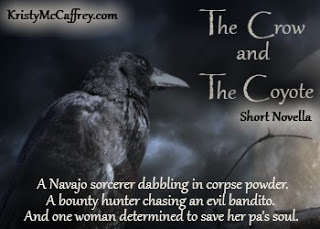
Hannah Dobbin is after an evil Navajo sorcerer who murdered her father, and she's determined to see him dead. But she'll need a bounty hunter—The Crow—to help find this vile man. With Hallowtide upon them, more evil is afoot than they can handle; but love will find a way.
(This story was previously published in the anthology: Cowboys, Creatures and Calico Vol. 2)
Excerpt:
Hannah awoke before dawn from her pallet by the tiny fire she and Sani had allowed themselves. For the first time since her pa died some three weeks ago, her dreams had been calm. She turned on her side and watched the man called Crow, slumbering several feet away beside a horse he'd retrieved the previous night. The presence of both had kept the spooks at bay, and a feeling of safety washed over her.
She wondered if trusting the man was wise, but Sani grudgingly accepted him. Truthfully, they could use his help. None of the Navajo men would accompany them—they insisted on distancing themselves from the actions of two women not in their right minds. Hannah knew the beliefs of the Navajo—that stirring up spirits would not end well—but she had no choice, not if she wanted to help her pa. She knew, however, that if she and Sani weren't careful they could both end up dead.
Mr. Crow consumed a large space in this world with his obvious physical presence, and a look in his dark eyes that was both remote and calculating. She sensed he walked a fine line between justice and violence. It didn't frighten her, but she did wonder if she could trust him.
He awoke, stood, and immediately checked his horse. Then, he looked directly at her.
"Mornin'," he said.
* * * *
Also available today ~ Lily and Mesquite Joe.
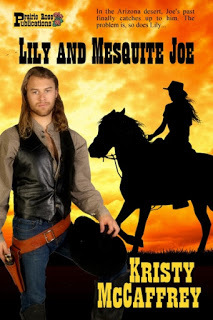
Lily Kingston has long loved Mesquite Joe Riordan, but when he doesn’t step forward to protest her betrothal to another man—arranged by her papa—her heart breaks. When Joe is blamed for the murder of a ranch hand and disappears, Lily knows exactly where to find him. Facing the truth of his past will test her resolve, but only her stubbornness can win his heart.
(This story was previously published in the anthology Cowboy Cravings.)
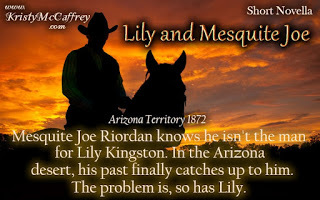
Excerpt:
The following day and night she stayed close, waiting for the fever and delirium to break. That evening he awoke.
Relief blanketed her, along with anticipation. She scooted close to him.
“Joe?”
He opened his eyes, trying to focus on her but his confusion was clear.
“Lily? You’re…still here?”
“I came to help you.”
The flash of anger he directed at her took her by surprise. Her fingers halted mid-air; she’d been reaching for his arm as she spoke, wanting to touch him just as she had all these past hours. Slowly, she lowered her hand to her lap, and swallowed against the flush of humiliation that heated her cheeks. Deep down, she’d been certain he’d be happy to see her. Now, she wondered if she should’ve come. But if she hadn’t, he’d likely be in worse shape, his wound festering and no one to care for him.
“What happened?” he asked, his deep voice worn-down and hoarse. “I don’t remember…”
“You were shot,” she replied, trying not to feel angry herself.
* * * *
Coming October 22 ~ A BRAND NEW short novella featuring another bounty hunting Boggs brother. Stay tuned!!

To catch all the latest news from Kristy, sign up for her newsletter
BUY LINKS
The Crow and the Coyote
Amazon
Nook
iBooks
Kobo
Smashwords
Lily and Mesquite Joe
Amazon
Nook
iBooks
Kobo
Smashwords
My series on Women's Sexuality will continue on Thursday with Part III: What Do Women Want? but I wanted to pop in to share two short novellas that released today.
The Crow and the Coyote and Lily and Mesquite Joe are available in digital for only 99 cents.

The setting for The Crow and the Coyote, a paranormal western romance just in time for Halloween, is Canyon de Chelly (pronounced de shay). This national monument is located in northeastern Arizona within the boundaries of the Navajo Nation. Rock art and other excavations have revealed human habitation for at least 4,500 years, encompassing not just the Navajo but the ancient Anasazi as well. In the 18th century, the canyon became a major stronghold of the Navajo—the high walls offering protection and the streams helping to grow corn crops and peach trees.
It was here that Kit Carson, under orders from James Carleton—governor and commander of New Mexico Territory—sought to purge the Navajo and relocate them to the Bosque Redondo in New Mexico. The Long Walk, an arduous journey which encompassed well over 50 separate treks led by the U.S. Army, occurred from 1863 to 1866. The accounts of death by starvation, sickness, or violence left an indelible trauma on the people. Although they were allowed to return to Canyon de Chelly in 1868, they would never forget this painful period of their history.

Hannah Dobbin is after an evil Navajo sorcerer who murdered her father, and she's determined to see him dead. But she'll need a bounty hunter—The Crow—to help find this vile man. With Hallowtide upon them, more evil is afoot than they can handle; but love will find a way.
(This story was previously published in the anthology: Cowboys, Creatures and Calico Vol. 2)
Excerpt:
Hannah awoke before dawn from her pallet by the tiny fire she and Sani had allowed themselves. For the first time since her pa died some three weeks ago, her dreams had been calm. She turned on her side and watched the man called Crow, slumbering several feet away beside a horse he'd retrieved the previous night. The presence of both had kept the spooks at bay, and a feeling of safety washed over her.
She wondered if trusting the man was wise, but Sani grudgingly accepted him. Truthfully, they could use his help. None of the Navajo men would accompany them—they insisted on distancing themselves from the actions of two women not in their right minds. Hannah knew the beliefs of the Navajo—that stirring up spirits would not end well—but she had no choice, not if she wanted to help her pa. She knew, however, that if she and Sani weren't careful they could both end up dead.
Mr. Crow consumed a large space in this world with his obvious physical presence, and a look in his dark eyes that was both remote and calculating. She sensed he walked a fine line between justice and violence. It didn't frighten her, but she did wonder if she could trust him.
He awoke, stood, and immediately checked his horse. Then, he looked directly at her.
"Mornin'," he said.
* * * *
Also available today ~ Lily and Mesquite Joe.

Lily Kingston has long loved Mesquite Joe Riordan, but when he doesn’t step forward to protest her betrothal to another man—arranged by her papa—her heart breaks. When Joe is blamed for the murder of a ranch hand and disappears, Lily knows exactly where to find him. Facing the truth of his past will test her resolve, but only her stubbornness can win his heart.
(This story was previously published in the anthology Cowboy Cravings.)

Excerpt:
The following day and night she stayed close, waiting for the fever and delirium to break. That evening he awoke.
Relief blanketed her, along with anticipation. She scooted close to him.
“Joe?”
He opened his eyes, trying to focus on her but his confusion was clear.
“Lily? You’re…still here?”
“I came to help you.”
The flash of anger he directed at her took her by surprise. Her fingers halted mid-air; she’d been reaching for his arm as she spoke, wanting to touch him just as she had all these past hours. Slowly, she lowered her hand to her lap, and swallowed against the flush of humiliation that heated her cheeks. Deep down, she’d been certain he’d be happy to see her. Now, she wondered if she should’ve come. But if she hadn’t, he’d likely be in worse shape, his wound festering and no one to care for him.
“What happened?” he asked, his deep voice worn-down and hoarse. “I don’t remember…”
“You were shot,” she replied, trying not to feel angry herself.
* * * *
Coming October 22 ~ A BRAND NEW short novella featuring another bounty hunting Boggs brother. Stay tuned!!

To catch all the latest news from Kristy, sign up for her newsletter
BUY LINKS
The Crow and the Coyote
Amazon
Nook
iBooks
Kobo
Smashwords
Lily and Mesquite Joe
Amazon
Nook
iBooks
Kobo
Smashwords
Published on October 13, 2015 19:07
•
Tags:
arizona, arizona-territory, halloween, historical-western-romance, kristy-mccaffrey, lily-and-mesquite-joe, the-coyote-and-the-crow, western-romance
October 1, 2015
Human Evolution and Women’s Sexuality Part II: Women Bleed And There’s No Practical Purpose
By Kristy McCaffrey
Don’t miss ~
Part I: Women Acquire Free Will
Let’s talk about periods.

At the beginning of a new cycle, the interior of a human uterus appears dead. Slowly, as ovulation approaches, an orchestration of hormones creates a lush farmland. Both estrogen and progesterone levels rise steeply. Blood vessels flourish, growing fat and full. If fertilization doesn’t occur, Mother Nature swiftly discards the entire setup. Estrogen and progesterone begin to slowly retreat, but then plummet drastically. The entire system goes into a death spasm. Within this tomb, a lake of blood forms, and like a dam breaking, gushes forth to the cervix.
Whenever any organ tissue dies and remains in the body, toxic substances are released and threaten the life of the host. For human females, slowly releasing these substances isn’t possible, so a process was needed to rid her body quickly of pathogenic bacteria and poisonous byproducts of cellular death. The solution was the opening of the cervix, uterine cramps to discard the lining, and the elimination of 4-8 tablespoons of blood. A woman’s period has begun.
Back in caveman days, menstrual odor would have been a serious attractor of predators. Add to that the general fear present in the males. A bleeding animal becomes weaker and a hunting male would take this as a sign of impending death. But what about when he caught a glimpse of a bleeding human female? She wasn’t injured and didn’t become weaker. Intercourse would likely leave blood on the penis, adding to a man’s fear of castration. Distance would soon be sought from menstruating females, since their condition was unexplainable and relegated to the realms of magic. This would soon breed fear and resentment toward women.
Establishing rules of conduct, geared mainly around hygiene issues, would have been of high concern to early ancient peoples. Unfortunately, many of these instructions have been used to strip power and autonomy from women over time. Pliny, from the first century, warns men that a menstruating woman can, by her touch, “blast the fruits of the field, sour wine, cloud mirrors, rust iron, and blunt the edges of knives.”
Women have always seemed to intuitively know that during menses a time of rest is required. With the body being so vulnerable, it is nature’s way of protecting a defenseless organism. During a woman’s period, she is more susceptible to uterine infections. Toxic-shock syndrome occurs because a tampon has prevented the discharge of menstrual blood, allowing harmful bacteria to take hold.
Historically, cultures celebrated the onset of menses in a young girl by enacting any number of initiations and rituals. Consistent throughout all of these was to impress on the girl that she was in possession of a great power and responsibility, and she was not to dispense future sexual favors easily for they were quite valuable.

Other mammal species have loads of babies—cubs, kits, puppies and the like—without the loss of significant amounts of blood and protein-rich tissue monthly. In fact, while dogs bleed during their period of heat, they’re also blessed with the ability to lick themselves, thereby recycling that iron trying to escape their bodies.
Overwhelmingly, there is no scientific evidence to support a benefit to human menstruation. What purpose does all this bleeding serve? With so many drawbacks to the human female, why hasn’t natural selection eliminated it long ago?
Don’t miss Part III: What Do Women Want?
Don’t miss ~
Part I: Women Acquire Free Will
Let’s talk about periods.

At the beginning of a new cycle, the interior of a human uterus appears dead. Slowly, as ovulation approaches, an orchestration of hormones creates a lush farmland. Both estrogen and progesterone levels rise steeply. Blood vessels flourish, growing fat and full. If fertilization doesn’t occur, Mother Nature swiftly discards the entire setup. Estrogen and progesterone begin to slowly retreat, but then plummet drastically. The entire system goes into a death spasm. Within this tomb, a lake of blood forms, and like a dam breaking, gushes forth to the cervix.
Whenever any organ tissue dies and remains in the body, toxic substances are released and threaten the life of the host. For human females, slowly releasing these substances isn’t possible, so a process was needed to rid her body quickly of pathogenic bacteria and poisonous byproducts of cellular death. The solution was the opening of the cervix, uterine cramps to discard the lining, and the elimination of 4-8 tablespoons of blood. A woman’s period has begun.
Back in caveman days, menstrual odor would have been a serious attractor of predators. Add to that the general fear present in the males. A bleeding animal becomes weaker and a hunting male would take this as a sign of impending death. But what about when he caught a glimpse of a bleeding human female? She wasn’t injured and didn’t become weaker. Intercourse would likely leave blood on the penis, adding to a man’s fear of castration. Distance would soon be sought from menstruating females, since their condition was unexplainable and relegated to the realms of magic. This would soon breed fear and resentment toward women.
Establishing rules of conduct, geared mainly around hygiene issues, would have been of high concern to early ancient peoples. Unfortunately, many of these instructions have been used to strip power and autonomy from women over time. Pliny, from the first century, warns men that a menstruating woman can, by her touch, “blast the fruits of the field, sour wine, cloud mirrors, rust iron, and blunt the edges of knives.”
Women have always seemed to intuitively know that during menses a time of rest is required. With the body being so vulnerable, it is nature’s way of protecting a defenseless organism. During a woman’s period, she is more susceptible to uterine infections. Toxic-shock syndrome occurs because a tampon has prevented the discharge of menstrual blood, allowing harmful bacteria to take hold.
Historically, cultures celebrated the onset of menses in a young girl by enacting any number of initiations and rituals. Consistent throughout all of these was to impress on the girl that she was in possession of a great power and responsibility, and she was not to dispense future sexual favors easily for they were quite valuable.

Other mammal species have loads of babies—cubs, kits, puppies and the like—without the loss of significant amounts of blood and protein-rich tissue monthly. In fact, while dogs bleed during their period of heat, they’re also blessed with the ability to lick themselves, thereby recycling that iron trying to escape their bodies.
Overwhelmingly, there is no scientific evidence to support a benefit to human menstruation. What purpose does all this bleeding serve? With so many drawbacks to the human female, why hasn’t natural selection eliminated it long ago?
Don’t miss Part III: What Do Women Want?
Published on October 01, 2015 08:19
•
Tags:
human-evolution, kristy-mccaffrey, leonard-shlain, menstruation, women-s-sexuality
September 17, 2015
Human Evolution and Women’s Sexuality Part I: Women Acquire Free Will
By Kristy McCaffrey
Women bleed. Men don’t.

According to biologists, there are between ten million and thirty million different species of life on earth. Only four thousand are mammals. And only one—humans—experience blood loss on a regular basis. If fertilization doesn’t occur each month, a human woman will menstruate, shedding the lining of her uterus along with several tablespoons of blood every four weeks. There are mammals who exhibit a type of menses—elephants, bats, shrews and hedgehogs—but it’s insignificant to their health. And out of approximately 270 different primate species, 31 menstruate, but again, the blood loss is negligible.
Over 150,000 years ago, the hominid brain completed a rapid inflation that added one-third to its size. This wasn’t good. No other species has as difficult or as dangerous a labor as a human woman. And no other female needs as much help from others to give birth.
The human brain consumes nearly 25 percent of every heartbeat’s oxygen-rich output. The brain’s pH and temperature must be narrowly regulated. The body must constantly clear the accumulating toxins from the fluid that bathes the brain. Why do we have such a large brain that requires so much of our body’s resources? In his book Sex, Time and Power: How Women’s Sexuality Shaped Human Evolution, author Leonard Shlain posits that it has to do with three things: sex, iron, and time.
The most amazing feature of today’s human woman is that she has the willpower to refuse sex around the time of ovulation. She can even remain celibate, if she so chooses. This is a direct consequence of birthing babies with large heads, which resulted in a high maternal mortality and painful childbirth.

A major overhaul of the brain was required for females to acquire the ability to exercise free will. With the expansion of the neocortex and the frontal lobes, along with the refinement of highly-specialized areas of both hemispheres, a female gained control of her sexual urges, much more so than the male. She acquired the ability to contemplate the relationship between mating and childbirth, a dangerous endeavor for her. She gained time to reflect, to understand that nine months after copulation resulted in offspring. She was able to connect the past with the future.
Female women underwent a major transformation because they were dying in childbirth. By gaining control of her sexual urges, she was able to control conception. And this would have profound effects on both women and men through time.
Don’t miss Part II: Women Bleed And There’s No Practical Purpose
Women bleed. Men don’t.

According to biologists, there are between ten million and thirty million different species of life on earth. Only four thousand are mammals. And only one—humans—experience blood loss on a regular basis. If fertilization doesn’t occur each month, a human woman will menstruate, shedding the lining of her uterus along with several tablespoons of blood every four weeks. There are mammals who exhibit a type of menses—elephants, bats, shrews and hedgehogs—but it’s insignificant to their health. And out of approximately 270 different primate species, 31 menstruate, but again, the blood loss is negligible.
Over 150,000 years ago, the hominid brain completed a rapid inflation that added one-third to its size. This wasn’t good. No other species has as difficult or as dangerous a labor as a human woman. And no other female needs as much help from others to give birth.
The human brain consumes nearly 25 percent of every heartbeat’s oxygen-rich output. The brain’s pH and temperature must be narrowly regulated. The body must constantly clear the accumulating toxins from the fluid that bathes the brain. Why do we have such a large brain that requires so much of our body’s resources? In his book Sex, Time and Power: How Women’s Sexuality Shaped Human Evolution, author Leonard Shlain posits that it has to do with three things: sex, iron, and time.
The most amazing feature of today’s human woman is that she has the willpower to refuse sex around the time of ovulation. She can even remain celibate, if she so chooses. This is a direct consequence of birthing babies with large heads, which resulted in a high maternal mortality and painful childbirth.

A major overhaul of the brain was required for females to acquire the ability to exercise free will. With the expansion of the neocortex and the frontal lobes, along with the refinement of highly-specialized areas of both hemispheres, a female gained control of her sexual urges, much more so than the male. She acquired the ability to contemplate the relationship between mating and childbirth, a dangerous endeavor for her. She gained time to reflect, to understand that nine months after copulation resulted in offspring. She was able to connect the past with the future.
Female women underwent a major transformation because they were dying in childbirth. By gaining control of her sexual urges, she was able to control conception. And this would have profound effects on both women and men through time.
Don’t miss Part II: Women Bleed And There’s No Practical Purpose
Published on September 17, 2015 07:47
•
Tags:
brain-size, free-will, human-evolution, kristy-mccaffrey, leonard-shlain, women-s-sexuality
September 6, 2015
End Of Summer Reading Recommendations
By Kristy McCaffrey
If you're like me, I look forward to spending my evenings reading as Fall approaches. Here are a few of my recommended reads. I've included both non-fiction and fiction.

Four Corners: A Journey into the Heart of Papua New Guinea by Kira Salak
This coming-of-age tale, told against the backdrop of a journey through Papua New Guinea (PNG), is at times engrossing and baffling. Ms. Salak is 24 years old at the time and sets out to cross PNG. She does so by several means. Along the way, she encounters locals and foreigners, and often puts her life at risk. Her descriptions and impressions are at times humorous and heartbreaking, especially her time spent at a refugee camp. The journey encompasses her search for...something. Even she's not certain what. This is as much a psychological trek as a discovery of a place so different than what much of us know. Kudos to Salak for having the courage to share her tale.
**********

The Cruelest Journey: Six-Hundred Miles To Timbuktu by Kira Salak
Having read Ms. Salak's previous non-fiction book, Four Corners, I was so pleased to find a level of maturity and wisdom in this book that was lacking in the other. In Four Corners, she seemed both lost and driven in her pursuit to explore Papua New Guinea, and took unnecessary risks that not even she could understand. But in The Cruelest Journey, we have a woman who can articulate why she would undertake such a dangerous journey (traveling the Niger River by kayak, facing village after village of possibly hostile natives). Weaving in the story of an 18th century Scottish explorer named Mungo Park who also undertook this journey, we're given a glimpse into the wonder and madness that accompanies intrepid travelers that spans the ages. I really loved this book, and I appreciate Ms. Salak's candor in sharing herself and her experiences. We may not always agree with or understand her desire to explore remote parts of the world, but her courage (both on and off the page) lets us come along for the ride.
**********

Freefall by Robin Brande
Eliza Shepherd has recently lost her husband Jamey to a climbing accident. As an adventure writer and columnist, she must come to grips with not only losing the love of her life but a lifestyle as well. When her mother-in-law, Hildy, loses her own husband and decides to move from Nevada back to New York, Eliza makes an impulsive decision to accompany her. Moving to the town where Jamey grew up, she hopes to find closure in addition to material for a book she's trying to write about her deceased husband.
Eliza soon catches the eye of Ted Walsh, a handsome local man who'd been childhood friends with Jamey. Eliza isn't in the mood to date, despite two years having passed since Jamey's death, but Ted is persistent. She also comes in contact with Ted's older brother, David. Eliza doesn't like David initially--their dogs get into a scuffle and he's rude about it--but it's clear she's curious about him. When her dog suffers a bout of heat exhaustion, David comes to the rescue and they find themselves alone at his house. With it suddenly clear that David interests her far more than Ted, she begins a physical relationship without hesitation. That she could ever love anyone again after Jamey surprises her, but the connection with David is undeniable and intense.
The third act of the novel draws out a misunderstanding between the two far too long, but it keeps the pages turning. Ms. Brande creates a believable and likable character in Eliza and a dark, brooding hero in David, who suffers from a slight stutter. The grief of losing a loved one to an adventurous lifestyle is handled with sharp insight and understanding, while Eliza's romance with David gives hope that life does go on. A thoroughly enjoyable read.
**********

Solar Storms by Linda Hogan
This lyrical, haunting and ultimately uplifting novel is very hard to describe. I've tried several times to tell others about it and know I've failed to convey the magic that lies between the words. It's a story about five generations of women, it's a story about the building of dams north of Minnesota and the devastation to the animals and people, it's a story about the many facets of the human spirit, both good and evil. But the gem of the tale lies in the connection to Mother Earth. Read the book. Any synopsis doesn't do it justice. It must be experienced firsthand.
**********

Wish For The Moon by Celia Yeary
At first glance, this book isn’t what it seems. The story of a 16-year-old girl who lives on a farm in North Texas might seem too pedestrian to grab a reader’s attention. However, it’s anything but ordinary, and that’s due in large part to Ms. Yeary’s mastery of storytelling.
Annie McGinnis resides with her parents and two older brothers in the remote Texas countryside. She yearns to see the world, but has no practical outlet for such fanciful longings. One day, a young man appears on their doorstep, hungry and looking for work. Max Landry isn’t on the run exactly, but he does have a secret that will propel Annie out of her comfort zone to help him. And, along the way, she comes to love him.
With well-drawn secondary characters—Annie’s slow-witted brother Clifford will be a favorite—and an attention to detail of the early-twentieth century, the tale unfolds with a subtlety that soon grips you. It’s an endearing and memorable story of a girl finding her way in the world. I couldn’t put the book down.
**********

Girl Underwater by Claire Kells
Avery Delacorte is a college swimmer on a Thanksgiving flight home from San Francisco to Boston when the plane crashes in the Rocky Mountains. Only she, her teammate Colin, and three little boys survive. The story switches between her months of recovery and the immediate aftermath of the crash. This narrative style works extremely well in keeping you on the edge of your seat. Told entirely from Avery's point-of-view, we plummet into PTSD and her struggle to overcome it. Parallel to this challenge is a romantic subplot involving the stoic Colin and Avery's conflicted feelings for him, both before and after the crash. I have to admit, I couldn't put this book down. A very well-crafted story.
**********

Beggarman Thief by S.K. McClafferty
CIA agent London Llewellyn walks into a dark hotel room to find her brother murdered and two assailants fighting. Devastated, she escapes with her life, but the key to finding her brother’s killer lies in finding those antagonists, one of whom likely was an eyewitness. Adam De Wulf is ex-CIA, still acting like a spook as he tries to steal a very rare orchid. Stumbling into the murder of Llewellyn’s brother was an accident; when London locates him he refuses to help, wanting to stay as far from his old job as possible. But sparks fly and they’re soon deep in espionage that includes clues from Adam’s past. Beggarman Thief is a fast-paced thriller, with twists and turns that keep the reader guessing until the end. Ms. McClafferty knows her spy stuff, blending the action well with the growing attraction between Adam and London. The relationship is hot, with level-headed and driven Llewellyn matching wits with sexy De Wulf at every turn. An entertaining good time.
**********

Prodigal Gun by Kathleen Rice Adams
Following the Civil War, Jessie Caine has been raising her daughter alone at the Hard Eights, a ranch in Texas. She's both tough and heartbroken. When the reason for that despair appears on her doorstep--Mason Caine, the man she's always loved and her husband's brother--she's stunned. Believing Mason was dead, she must now come to terms with this new version of the man to which she once gave her heart. But Mason has secrets of his own, not the least of which is an alias known as Calhoun, a hired gun with a reputation that threatens his safety at every turn. Loving Jessie and staying with her are options he's hard-pressed to resolve. This is a novel with a full western tilt, along with a steamy romance sure to please. This is Ms. Adams' first novel-length story and it doesn't disappoint. While the descriptions and historical detail are well-researched, it's the redemption of bad-boy Mason at which Adams excels. You'll be rooting for him at the end, and for the peace that he can only find with Jessie.
**********

Point of Direction by Rachel Weaver
Anna and Kyle decide to live at an isolated lighthouse north of Juneau, Alaska and it soon takes a toll on both of them, but in different ways. They've kept secrets from one another--painful wounds each is trying to heal on their own. Ms. Weaver's book perfectly captures the folly of youth and the ignorance that propels individuals into situations they're unprepared for. But it's in this messiness that the inward journey unfolds. You'll keep turning the pages to see how it all turns out. To give more of the plot would spoil it. And I couldn't keep the tears away at the end.
**********

The Sound of a Wild Snail Eating by Elisabeth Tova Bailey
In her 30's, Ms. Bailey contracted an unknown virus after a trip to Europe. What seemed at first to be the flu eventually turned into a two-decade struggle with a debilitating illness, leaving her bedridden for months at a time. She acquires a snail from the woods near her house and spends hours each day observing the creature. Her insights are intriguing--how many know what a snail likes to eat, its favorite place to sleep, or how they reproduce? With simple, easy-to-read prose, Bailey shows us how the world becomes when we focus on small details. Forced to slow her life to a snail's pace, the creature becomes a kindred spirit in a most profound way. I found this book to be an unexpected treat; her illness is heartbreaking, making you feel gratitude for the good health most of us take for granted, but her observations into the snail's world show us that we move through life so quickly, invariably missing the magic of other creatures sharing the planet with us.
If you're like me, I look forward to spending my evenings reading as Fall approaches. Here are a few of my recommended reads. I've included both non-fiction and fiction.

Four Corners: A Journey into the Heart of Papua New Guinea by Kira Salak
This coming-of-age tale, told against the backdrop of a journey through Papua New Guinea (PNG), is at times engrossing and baffling. Ms. Salak is 24 years old at the time and sets out to cross PNG. She does so by several means. Along the way, she encounters locals and foreigners, and often puts her life at risk. Her descriptions and impressions are at times humorous and heartbreaking, especially her time spent at a refugee camp. The journey encompasses her search for...something. Even she's not certain what. This is as much a psychological trek as a discovery of a place so different than what much of us know. Kudos to Salak for having the courage to share her tale.
**********

The Cruelest Journey: Six-Hundred Miles To Timbuktu by Kira Salak
Having read Ms. Salak's previous non-fiction book, Four Corners, I was so pleased to find a level of maturity and wisdom in this book that was lacking in the other. In Four Corners, she seemed both lost and driven in her pursuit to explore Papua New Guinea, and took unnecessary risks that not even she could understand. But in The Cruelest Journey, we have a woman who can articulate why she would undertake such a dangerous journey (traveling the Niger River by kayak, facing village after village of possibly hostile natives). Weaving in the story of an 18th century Scottish explorer named Mungo Park who also undertook this journey, we're given a glimpse into the wonder and madness that accompanies intrepid travelers that spans the ages. I really loved this book, and I appreciate Ms. Salak's candor in sharing herself and her experiences. We may not always agree with or understand her desire to explore remote parts of the world, but her courage (both on and off the page) lets us come along for the ride.
**********

Freefall by Robin Brande
Eliza Shepherd has recently lost her husband Jamey to a climbing accident. As an adventure writer and columnist, she must come to grips with not only losing the love of her life but a lifestyle as well. When her mother-in-law, Hildy, loses her own husband and decides to move from Nevada back to New York, Eliza makes an impulsive decision to accompany her. Moving to the town where Jamey grew up, she hopes to find closure in addition to material for a book she's trying to write about her deceased husband.
Eliza soon catches the eye of Ted Walsh, a handsome local man who'd been childhood friends with Jamey. Eliza isn't in the mood to date, despite two years having passed since Jamey's death, but Ted is persistent. She also comes in contact with Ted's older brother, David. Eliza doesn't like David initially--their dogs get into a scuffle and he's rude about it--but it's clear she's curious about him. When her dog suffers a bout of heat exhaustion, David comes to the rescue and they find themselves alone at his house. With it suddenly clear that David interests her far more than Ted, she begins a physical relationship without hesitation. That she could ever love anyone again after Jamey surprises her, but the connection with David is undeniable and intense.
The third act of the novel draws out a misunderstanding between the two far too long, but it keeps the pages turning. Ms. Brande creates a believable and likable character in Eliza and a dark, brooding hero in David, who suffers from a slight stutter. The grief of losing a loved one to an adventurous lifestyle is handled with sharp insight and understanding, while Eliza's romance with David gives hope that life does go on. A thoroughly enjoyable read.
**********

Solar Storms by Linda Hogan
This lyrical, haunting and ultimately uplifting novel is very hard to describe. I've tried several times to tell others about it and know I've failed to convey the magic that lies between the words. It's a story about five generations of women, it's a story about the building of dams north of Minnesota and the devastation to the animals and people, it's a story about the many facets of the human spirit, both good and evil. But the gem of the tale lies in the connection to Mother Earth. Read the book. Any synopsis doesn't do it justice. It must be experienced firsthand.
**********

Wish For The Moon by Celia Yeary
At first glance, this book isn’t what it seems. The story of a 16-year-old girl who lives on a farm in North Texas might seem too pedestrian to grab a reader’s attention. However, it’s anything but ordinary, and that’s due in large part to Ms. Yeary’s mastery of storytelling.
Annie McGinnis resides with her parents and two older brothers in the remote Texas countryside. She yearns to see the world, but has no practical outlet for such fanciful longings. One day, a young man appears on their doorstep, hungry and looking for work. Max Landry isn’t on the run exactly, but he does have a secret that will propel Annie out of her comfort zone to help him. And, along the way, she comes to love him.
With well-drawn secondary characters—Annie’s slow-witted brother Clifford will be a favorite—and an attention to detail of the early-twentieth century, the tale unfolds with a subtlety that soon grips you. It’s an endearing and memorable story of a girl finding her way in the world. I couldn’t put the book down.
**********

Girl Underwater by Claire Kells
Avery Delacorte is a college swimmer on a Thanksgiving flight home from San Francisco to Boston when the plane crashes in the Rocky Mountains. Only she, her teammate Colin, and three little boys survive. The story switches between her months of recovery and the immediate aftermath of the crash. This narrative style works extremely well in keeping you on the edge of your seat. Told entirely from Avery's point-of-view, we plummet into PTSD and her struggle to overcome it. Parallel to this challenge is a romantic subplot involving the stoic Colin and Avery's conflicted feelings for him, both before and after the crash. I have to admit, I couldn't put this book down. A very well-crafted story.
**********

Beggarman Thief by S.K. McClafferty
CIA agent London Llewellyn walks into a dark hotel room to find her brother murdered and two assailants fighting. Devastated, she escapes with her life, but the key to finding her brother’s killer lies in finding those antagonists, one of whom likely was an eyewitness. Adam De Wulf is ex-CIA, still acting like a spook as he tries to steal a very rare orchid. Stumbling into the murder of Llewellyn’s brother was an accident; when London locates him he refuses to help, wanting to stay as far from his old job as possible. But sparks fly and they’re soon deep in espionage that includes clues from Adam’s past. Beggarman Thief is a fast-paced thriller, with twists and turns that keep the reader guessing until the end. Ms. McClafferty knows her spy stuff, blending the action well with the growing attraction between Adam and London. The relationship is hot, with level-headed and driven Llewellyn matching wits with sexy De Wulf at every turn. An entertaining good time.
**********

Prodigal Gun by Kathleen Rice Adams
Following the Civil War, Jessie Caine has been raising her daughter alone at the Hard Eights, a ranch in Texas. She's both tough and heartbroken. When the reason for that despair appears on her doorstep--Mason Caine, the man she's always loved and her husband's brother--she's stunned. Believing Mason was dead, she must now come to terms with this new version of the man to which she once gave her heart. But Mason has secrets of his own, not the least of which is an alias known as Calhoun, a hired gun with a reputation that threatens his safety at every turn. Loving Jessie and staying with her are options he's hard-pressed to resolve. This is a novel with a full western tilt, along with a steamy romance sure to please. This is Ms. Adams' first novel-length story and it doesn't disappoint. While the descriptions and historical detail are well-researched, it's the redemption of bad-boy Mason at which Adams excels. You'll be rooting for him at the end, and for the peace that he can only find with Jessie.
**********

Point of Direction by Rachel Weaver
Anna and Kyle decide to live at an isolated lighthouse north of Juneau, Alaska and it soon takes a toll on both of them, but in different ways. They've kept secrets from one another--painful wounds each is trying to heal on their own. Ms. Weaver's book perfectly captures the folly of youth and the ignorance that propels individuals into situations they're unprepared for. But it's in this messiness that the inward journey unfolds. You'll keep turning the pages to see how it all turns out. To give more of the plot would spoil it. And I couldn't keep the tears away at the end.
**********

The Sound of a Wild Snail Eating by Elisabeth Tova Bailey
In her 30's, Ms. Bailey contracted an unknown virus after a trip to Europe. What seemed at first to be the flu eventually turned into a two-decade struggle with a debilitating illness, leaving her bedridden for months at a time. She acquires a snail from the woods near her house and spends hours each day observing the creature. Her insights are intriguing--how many know what a snail likes to eat, its favorite place to sleep, or how they reproduce? With simple, easy-to-read prose, Bailey shows us how the world becomes when we focus on small details. Forced to slow her life to a snail's pace, the creature becomes a kindred spirit in a most profound way. I found this book to be an unexpected treat; her illness is heartbreaking, making you feel gratitude for the good health most of us take for granted, but her observations into the snail's world show us that we move through life so quickly, invariably missing the magic of other creatures sharing the planet with us.
Published on September 06, 2015 11:39
•
Tags:
book-reviews, celia-yeary, claire-kells, elisabeth-tova-bailey, kathleen-rice-adams, kira-salak, kristy-mccaffrey, linda-hogan, rachel-weaver, robin-brande, sk-mcclafferty
Author Kristy McCaffrey
Kristy McCaffrey writes western historical and contemporary romances. She and her husband live in Arizona with their two dogs. Visit her online at kristymccaffrey.com.
- Kristy McCaffrey's profile
- 518 followers


